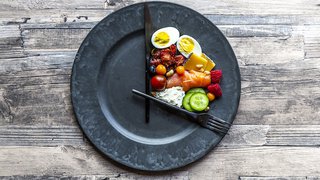Beat the heat with heart-healthy cantaloupe, honeydew, and watermelon
June 27, 2016
Nothing makes me think of summertime like taking a big, juicy bite of melon on a hot day. We’re lucky in North Texas because our state ranks in the top five for production of watermelon, cantaloupe, and honeydew melon.
Melons become available in mid-May, and their season continues throughout the summer months. Eating melons is a great way to help quench thirst during our hot summer months, and they’re an excellent source of vitamin A, vitamin C, and potassium. Melons also are great foods to incorporate into a heart-healthy diet.
How to choose and store melons
As you shop for melons, here are a few tips to remember:
- When comparing two similarly sized melons for ripeness, choose the one that feels heaviest.
- Watermelons have a “sweet spot” where the fruit sat on the ground as it ripened; the spot should be white, not yellow.
- Cantaloupes and honeydew melons should have a sweet, musky scent and give slightly when squeezed. If you shake them, you may be able to hear their seeds shaking.
- Cantaloupes will have cream-colored netting on the skin. Green tones in the spaces between sections of netting indicate that the melon is less ripe.
If you purchase an unripe melon, store it at room temperature until it ripens. Once it’s ripe, store it in the refrigerator to increase crispness.
Before you slice into a melon, wash the outside well. Ensure that your knife and cutting surface are clean – you don’t want to transfer bacteria from raw meat, for example, to your nice, fresh fruit. It’s best to slice a melon right before you eat it, but if you want to cut it ahead of time, store the cut pieces in the refrigerator.
If you have too much melon to eat at once, cut it into small chunks and store it in the freezer. The melon pieces will not be crispy when you thaw it, but they will be fine for smoothies or fruit salads like the Gingered Fruit Salad recipe below.
How melons fit in a healthy diet
Melons are an excellent source of potassium, a nutrient of which most Americans do not get enough in their daily diets. The American Heart Association says potassium helps lower blood pressure by reducing the effects of sodium and relaxing blood vessel walls. High blood pressure is an important risk factor for heart disease, and our dietary choices play an important role in blood pressure maintenance. Watermelon also is a good source of lycopene, a nutrient that has been associated with a reduced risk of certain types of cancer.
Another heart-healthy bonus of eating melons is that they are low-energy-dense. That means they’re low in calories compared to their weight. Melons also are satiating – they make you feel full – because of their fiber content. I often recommend munching on melons to help with weight management. Melons satisfy sweet-treat cravings without the empty calories of junk food, and with additional nutritional value.
Here’s a breakdown of the nutritional value of watermelon, cantaloupe, and honeydew, based on a one-cup serving size:
Watermelon
- Calories: 46
- Vitamin A: 865 International Units (IU)
- Vitamin C: 12 mg
- Potassium: 170 mg
- Fiber: 0.6 g
Cantaloupe
Honeydew
- Calories: 53
- Vitamin A: 27,529 IU
- Vitamin C: 57 mg
- Potassium: 417 mg
- Fiber: 1.4 g
- Calories: 61
- Vitamin A: 88 IU
- Vitamin C: 32 mg
- Potassium: 388 mg
- Fiber: 1.4 g
Is the sugar in melons bad for me?
A common misconception is that because melons contain natural sugar, they’re unhealthy. I can understand why people would think that – research has associated sugar consumption with heart disease.
However, the association of heart disease with sugar consumption is for “added” sugars, not natural sugars like the fructose found in melons. For example, table sugar can increase triglyceride (a circulating lipid) levels. Added sugar also has been linked to lower levels of HDL cholesterol (good cholesterol).
For more heart-healthy lifestyle tips and recipes, sign up for weekly One Heart email notifications.
Gingered Fruit Salad
4 servings
Ingredients
1 cup cantaloupe, cubed
1 medium apple, cored and chopped
1 medium orange, peeled and sectioned
1 cup grapes, sliced in half
½ cup blueberries, raspberries, or sliced strawberries
6-ounce carton of low-fat pineapple or vanilla yogurt
2 tablespoons of low-fat or “lite” mayonnaise
1 teaspoon grated ginger root
Directions
Toss the fruit together in a large bowl. In a separate bowl, stir together the yogurt, mayonnaise, brown sugar, and ginger root. Drizzle this mixture over the fruit and serve.
Nutrition information per serving:
Calories: 117, Total Fat: 2 g, Saturated Fat: 0.3 g, Total Carbohydrates: 23 g, Fiber: 2 g, Protein: 4 g, Sodium: 79 mg, Vitamin A: 1,376 IU, Vitamin C: 34 mg, Calcium: 57 mg, Iron: 0.3 mg.











